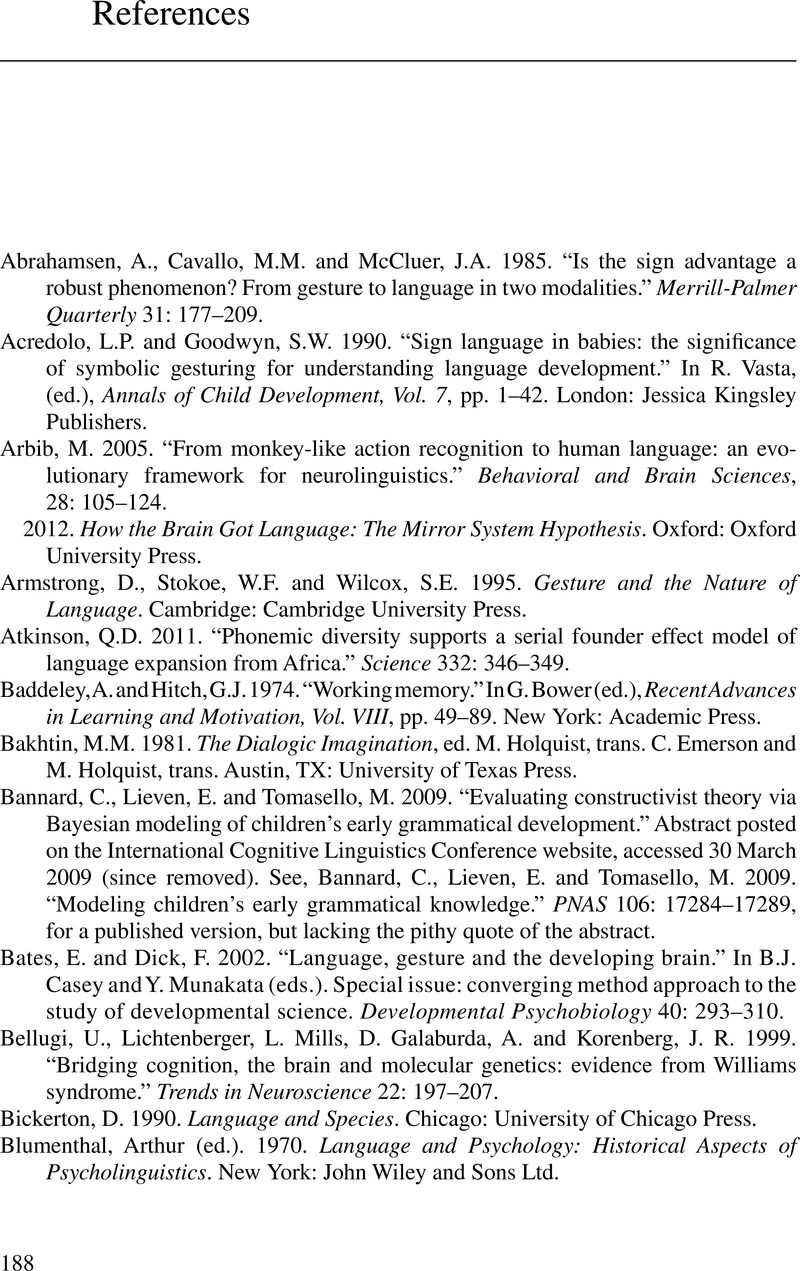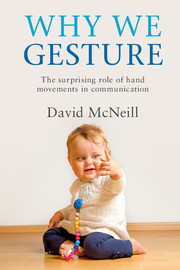References
Published online by Cambridge University Press: 05 December 2015
Summary

- Type
- Chapter
- Information
- Why We GestureThe Surprising Role of Hand Movements in Communication, pp. 188 - 199Publisher: Cambridge University PressPrint publication year: 2015



